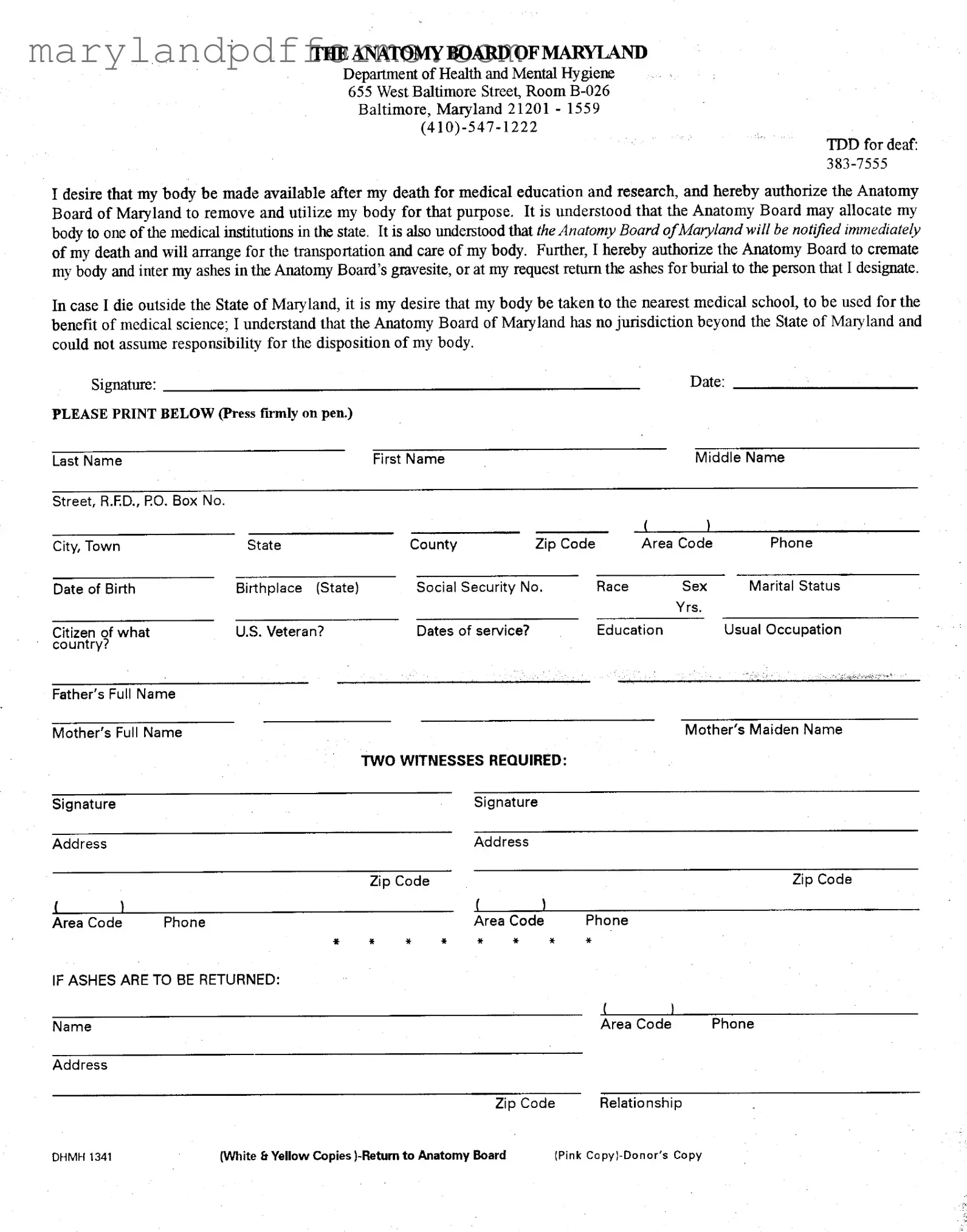The Maryland Anatomy form allows individuals to donate their bodies for medical education and research after death. By signing this form, donors authorize the Anatomy Board of Maryland to utilize their bodies in a manner that benefits medical science and training.
Any adult individual who wishes to donate their body for medical education and research can fill out the Maryland Anatomy form. It is important that the individual is of sound mind and understands the implications of their decision. Consent must be given voluntarily.
What happens to my body after I sign the form?
After signing the Maryland Anatomy form, the Anatomy Board of Maryland will be notified upon your death. They will arrange for the transportation and care of your body. The body may be allocated to a medical institution in Maryland for educational purposes.
Can I specify what happens to my ashes?
Yes, the Maryland Anatomy form allows you to specify how your ashes should be handled after cremation. You can request that your ashes be interred in the Anatomy Board’s gravesite or returned to a designated person for burial.
What if I die outside the state of Maryland?
If you die outside of Maryland, the form indicates that your body should be taken to the nearest medical school for use in medical science. However, the Anatomy Board of Maryland does not have jurisdiction beyond the state and cannot be responsible for the disposition of your body in that case.
Yes, the Maryland Anatomy form requires two witnesses to sign. These witnesses must provide their names and addresses, confirming that they observed you signing the form. This is to ensure the validity of the consent given.
Is there a fee associated with the donation?
There are no fees associated with the donation of your body to the Anatomy Board of Maryland. The costs for transportation and cremation are typically covered by the Anatomy Board, making the process accessible to individuals wishing to contribute to medical education.
If you wish to revoke your consent after signing the Maryland Anatomy form, you should do so in writing. It is advisable to notify the Anatomy Board of Maryland directly to ensure that your wishes are documented and respected. Keep a copy of your revocation for your records.
